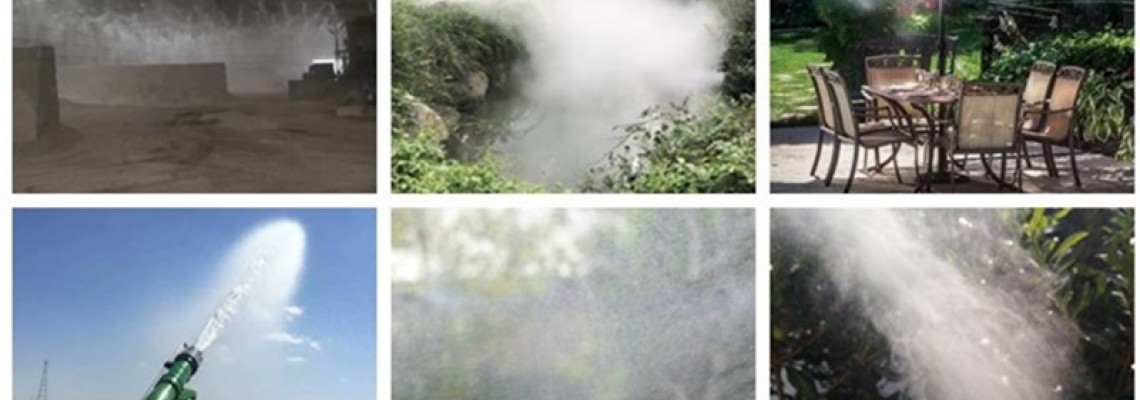
Mist Generation Systems
For mist to form and be effectively sprayed, the proper equipment is necessary. The selection of this equipment depends on your goals and the specifics of the location, as the droplet size in each device can range from 5 to 30 μm, and the power, as well as other technical parameters of the system, vary.
Mist generation systems are divided into two main types:
- high-pressure systems;
- low-pressure systems.
We will detail the characteristics of each system, their components, and the areas where their use is rational.
High-Pressure Mist Generation Systems
These systems have a key element that distinguishes them from others: a pump with a pressure of 65-120 atmospheres. This equipment is versatile and can be easily installed anywhere, making it applicable in almost any location. The system consists of:
- Filter – typically, a domestic filter is used for mechanical cleaning. In case of using heavily contaminated water (e.g., from a private well), periodic cleaning with special chemicals or acetic acid is recommended.
- High-pressure pumps – plunger or diaphragm. Plunger pumps are more reliable but produce noise during operation. Diaphragm pumps are quieter and cheaper but less durable. Each type of pump comes with additional equipment (timers, valves, etc.).
- Nozzles – an element of the system responsible for spraying, droplet size, and mist generation rate per minute. This depends on the nozzle diameter and other parts. They are made of nickel-plated brass, stainless steel, ceramic, and other materials.
- Fittings – used for connecting and installing additional system elements, they can be clamp or quick-release types.
- Main and auxiliary pipes – made of polyamide, polyethylene, nickel-plated brass, stainless steel. Depending on the usage location, pipes of appropriate diameters are selected.
Applications
High-pressure mist generation systems are widely used in various industrial sectors. They are used for:
- additional air humidification,
- dust control,
- cooling of spaces/rooms,
- elimination of insects and flies,
- cooling specific objects (machinery, electronics), such as external units of industrial air conditioners,
- elimination of unpleasant odors,
- in gardening as a decorative element,
- in production: for spraying, dust removal, humidification, liquid application, etc.
Low-Pressure Mist Generation Systems
This type of mist generation system is divided into two subtypes, one using rotating discs for spraying and the other using nozzles.
In systems using rotating discs, droplet size ranges from 25 to 40 μm. They are used only in combination with fans. Generally, these systems are a cheaper option or an economic substitute for high-pressure cooling systems.
Systems that use nozzles to spray water are similar in design to high-pressure mist generation systems, but here the pump pressure is between 3 and 35 atmospheres. As a result, it is impossible to create droplets smaller than 25 μm, which is impractical in many areas. When the temperature exceeds +35°C, these systems provide good cooling effects. In general, they are suitable for creating a microclimate in any industry where condensate accumulation or slight droplet deposition on surfaces is not problematic.
In some cases, these systems can operate without a pump and be directly connected to the water supply. Their advantage lies in their low cost and simple installation. Therefore, in many industries, this system is preferred over more expensive high-pressure systems.
Applications
Low-pressure mist generation systems with pumps are used:
- in production where humidification, cooling, dust suppression, and liquid spraying are needed,
- for irrigation in combination with high-pressure systems (because this method is more cost-effective),
- in agriculture (greenhouses, hydroponics, crop irrigation, spraying probiotics, etc.), animal husbandry and poultry farming (to create the appropriate microclimate), mushroom cultivation, and in retail for fish humidification.
As you can see, mist generation systems are useful and employed across various industrial sectors. The key is to select the appropriate system and equipment to ensure effective and long-lasting operation.

Leave a Comment